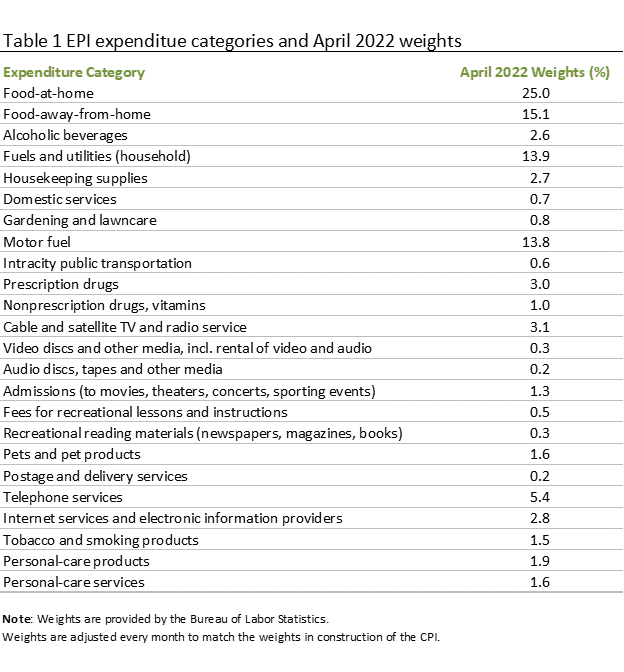AIER’s Everyday Price rose 0.5 percent in April after surging 3.0 percent in March, 1.3 percent in February, and 1.0 percent in January. Over the first four months of 2022, the EPI is up at an annualized rate of 18.7 percent, the fastest pace since July 2008. From a year ago, the Everyday Price Index is up 11.3 percent.
Price increases continue to be generally broad-based with 20 components showing gains versus three showing declines, and one unchanged in April. Food at home was by far the largest contributor in April, adding 32 basis points, followed by a 15-basis-point contribution from household fuels and utilities, a 9-basis-point contribution from food away from home (restaurants), and a 4-basis-point contribution from housekeeping supplies. The remaining contributions were two basis points or less.
Motor fuel prices, which are often a significant driver of the monthly changes in the Everyday Price index because of the large weighting in the index and the volatility of the underlying commodity, fell 0.8 percent for the month (on a not-seasonally adjusted basis) but are still up 44.0 percent from a year ago. That decline subtracted 10 basis points from the monthly increase.
The Everyday Price Index including apparel, a broader measure that includes clothing and shoes, rose 0.4 percent in April after gaining 2.8 percent in March, 1.4 percent in February, and 1.1 percent in January. Those results produce an annualized rate of 18.5 percent while over the past year, the Everyday Price Index including apparel is up 10.9 percent.
Apparel prices fell 1.4 percent on a not-seasonally-adjusted basis in April. Apparel prices tend to be volatile on a month-to-month basis. From a year ago, apparel prices are up 5.4 percent. Nearly every category of apparel and footwear showed a decline in April.
The Consumer Price Index, which includes everyday purchases as well as infrequently purchased, big-ticket items and contractually fixed items, rose 0.6 percent on a not-seasonally-adjusted basis in April. Over the past year, the Consumer Price Index is up 8.3 percent, down slightly from the 8.5 percent 12-month change through March and less than the 11.3 percent rise in the EPI.
The Consumer Price Index excluding food and energy rose 0.5 percent for the month (not seasonally adjusted) while the 12-month change came in at 6.2 percent. The 12-month change in the core CPI was just 1.3 percent in February 2021 and 2.4 percent in February 2020, before the pandemic.
After seasonal adjustment, the CPI rose 0.3 percent in April while the core increased 0.6 percent for the month. Within the core, core goods prices were up 0.2 percent in April and are up 9.7 percent from a year ago. Significant increases for the month were seen in new cars (1.7 percent), new trucks (0.9 percent), motor vehicle parts and equipment (1.2 percent), pet food (1.2 percent), and sporting goods (0.9 percent).
Core services prices were up 0.7 percent for the month and are up 4.9 percent from a year ago. Among core services, gainers include owners’ equivalent rent (which accounts for 23.8 percent of the CPI, rose 0.5 percent for the month and 4.8 percent from a year ago), other lodging away from home including hotels (up 2.0 percent for the month and 22.6 percent from a year ago), car and truck rentals (up 0.8 percent and 10.4 percent from a year ago), airfares (up 18.6 percent and 33.3 percent from a year ago), and pet services (1.1 percent and 9.0 percent from a year ago).
Price pressures for many goods and services in the economy remain elevated due to shortages of supplies and materials, logistical and supply chain issues, and labor shortages and turnover. Sustained elevated price increases are likely distorting economic activity by influencing consumer and business decisions. Furthermore, price pressures have resulted in a new Fed tightening cycle, raising the risk of a policy mistake. In addition, turmoil surrounding the Russian invasion of Ukraine and renewed lockdowns in China are sustaining a high level of uncertainty for the economic outlook. Caution is warranted.




